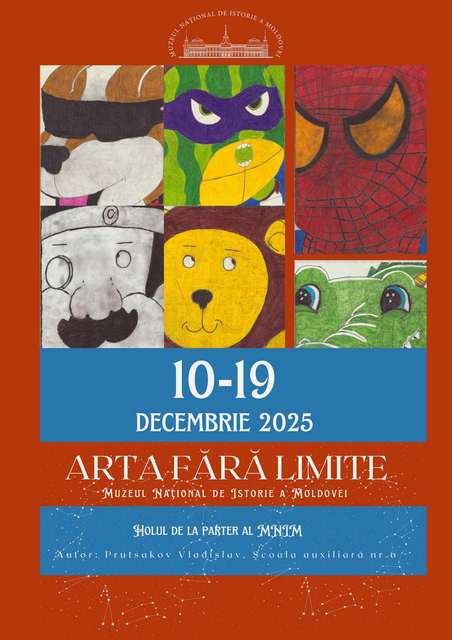Research
Academic Reports
From the Museum's 2019 Agenda (Science Component)
In 2019 the museum’s researchers will continue to work on individual research topics within the institutional project The role of museum heritage in the development of contemporary society. According to Order no.1857 of 17.12.2018 of the Ministry of Education, Culture and Research of the Republic of Moldova, the project The role of museum heritage in the development of contemporary society was extended for the year 2019 (funding for 2019 has been approved) In 2019, the museum's researchers will continue to research and systematize heritage museum collections: the collection of documents and photographs, post-war poster collection, postcard collection, archaeological collections (Paleolithic - Early Middle Ages), numismatics collections, biographical collections of some outstanding personalities (the Bessarabian nobility) and their presentation to the scientific community and the public at different scientific events and temporary exhibitions. The researchers will participate with papers, reports and theses at symposiums, conferences, seminars organized in the republic and abroad. Three scientific events are scheduled: Heraldic Symposium, 13th edition; Annual scientific conference of the museum History. Archaeology. Museology, 29th edition; International Symposium of Numismatics, 19th edition, October 2019 Two issues of the museum’s journal Tyragetia will be structured and edited: no.1 Archaeology. Ancient History; no.2 History. Museology, 2018. The following monographs will be published: E. Sava, I. Manzura, S. Agulnikov, Tumuli din stepa Bugeacului Cercetări arheologice în anii 1984-1987. (Barrows from the steppe of Bugeac. Archaeological research in 1984-1987) S. Ţerna, M. Vasilache-Curoşu, Figurine antropomorfe din etapa Cucuteni A din interfluviul pruto-nistrean (în baza colecţiilor Muzeului Naţional de Istorie a Moldovei). (Anthropomorphic figurines from the Cucuteni A stage in the interfluves of Prut and Nistru (based on collections of the National Museum of History of Moldova). All scientific and cultural events will have additional promotional materials. The results of the research will be valorized through museum exhibitions, primarily by organization of temporary exhibitions devoted to important events in the history of the republic, and by creation of new exhibitions of museum collections. Researchers will develop the scientific concept and thematic structure for the following temporary exhibitions: ArheOS. Când antropologii şi arheologii fac oasele să vorbească. (ArheOS. When anthropologists and archaeologists make bones talk) Afişul muzical în colecţia Muzeului Naţional de Istorie a Moldovei. (Musical poster in the collection of the National Museum of History of Moldova) Situl arheologic Costeşti. 65 de ani de cercetări arheologice. (The archaeological site of Costeşti. 65 years of archaeological research) Figuri antropomorfe cucuteniene. (Cucuteni antropomorthic figures) Interesting pieces, materials and documents will be collected and purchased for the purpose of developing the museum heritage and organization of future exhibitions. The process of digitalization of museum heritage will continue. Files of analytical inventory will be drawn up for each cultural asset from the museum collections and for all the pieces that will enter the museum heritage through filed research, acquisitions and donations. The classification of mobile cultural pieces will continue. For all major events organized by museum researchers will be issued press releases to be distributed to various channels of information. The information about scientific events and exhibitions organized by the museum will be promoted in the printed media, on Radio and on TV. Museum researchers will constantly update the museum's website with written information for both the general public and interested specialists.
|

















































